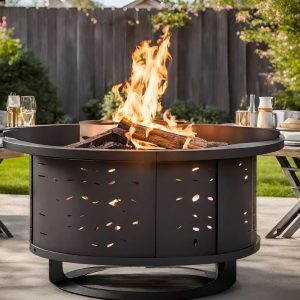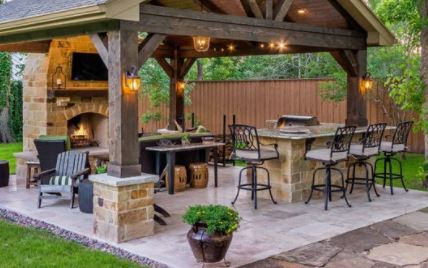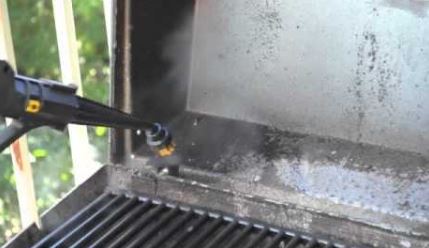Hidden Tank Fire Pit Dangers: What You Need to Know
Hidden Tank Fire Pit Dangers: What You Need to Know

If you’re looking for a way to add warmth and ambiance to your outdoor living space, a fire pit is a great option. However, hidden tank fire pits can pose a danger if not used correctly.
Understanding fire pit safety is essential before purchasing and using a hidden tank fire pit. Propane fire pits can be dangerous if not properly ventilated, as they can cause an explosion. Additionally, propane fuel is expensive and has a smaller BTU output than natural gas.
Hidden tank fire pits are convenient for hiding unsightly propane tanks, but they require proper safety precautions to prevent accidents and injuries.
Key Takeaways
- Understanding fire pit safety is essential before purchasing and using a hidden tank fire pit.
- Propane fire pits can be dangerous if not properly ventilated, as they can cause an explosion.
- By taking safety precautions, you can enjoy the warmth and beauty of a fire pit while keeping your family and property safe.
Understanding Fire Pit Safety
If you want to enjoy your fire pit safely, there are a few things you need to keep in mind. In this section, we’ll cover the types of fire pits, proper usage and precautions, and safe distance and location guidelines.
Types of Fire Pits
There are different types of fire pits available in the market, including propane, wood-burning, and gas fire pits. Each type has its own set of advantages and disadvantages.
Propane fire pits are generally considered safer as they don’t produce smoke or sparks. Wood-burning fire pits, on the other hand, require more attention and maintenance and can produce embers that can fly out and cause a fire.
Proper Usage and Precautions
Regardless of the type of fire pit you choose, there are certain safety guidelines that you should follow.
For instance, never leave your fire pit unattended, especially if there are children or pets around. Always keep a fire extinguisher nearby and make sure that everyone knows how to use it. Additionally, avoid using flammable liquids to start the fire as this can cause an explosion.
Safe Distance and Location
When setting up your fire pit, make sure that it is at a safe distance from any flammable materials, including your house, trees, and bushes. As a general rule, your fire pit should be at least 10 feet away from any structure or combustible material.
If you’re setting up your fire pit on a patio or deck, make sure that the surface is fire-resistant.
Hazards of Hidden Tank Fire Pits
Hidden tank fire pits have become increasingly popular due to their sleek and modern design. However, it is important to be aware of the potential hazards they pose. In this section, we will discuss the risks associated with hidden tank fire pits and how to mitigate them.
Risk of Gas Leaks and Explosions
One of the primary hazards of hidden tank fire pits is the risk of gas leaks and explosions. Propane tanks are highly flammable and can explode if not handled properly.
Hidden tank fire pits can also have gas line leaks due to poor installation or maintenance. To avoid these risks, have a licensed professional install and maintain your hidden tank fire pit. You should also regularly inspect your gas line and tank for leaks and damage.
Ventilation Concerns
Another hazard of hidden tank fire pits is poor ventilation. Gas fires emit carbon monoxide, an odorless and colorless gas that can be deadly in high concentrations.
To avoid carbon monoxide poisoning, make sure that your hidden tank fire pit is installed in a well-ventilated area. You should also never use your hidden tank fire pit indoors or in an enclosed space.
Material and Design Flaws
Material and design flaws can also pose hazards with hidden tank fire pits. Poorly designed fire pits can cause flames to shoot out unexpectedly or cause the surrounding materials to catch fire.
Additionally, some hidden propane tank fire pits may have flaws in their construction that can lead to gas leaks or explosions. To avoid these risks, choose a reputable manufacturer and inspect your fire pit regularly for any signs of wear or damage.
Preventing Accidents and Injuries
When it comes to fire pit safety, prevention is key. By taking the necessary precautions, you can reduce the risk of accidents and injuries. Here are some tips to help you use your fire pit safely and responsibly.
Fire Pit Monitoring and Supervision
Never leave your fire pit unattended, especially when children or pets are present. Make sure that someone is always watching the fire and that it is completely extinguished before leaving the area.
Keep a close eye on the fire, especially if it is windy, as embers can easily blow out of the pit and start a fire.
Emergency Preparedness
Despite your best efforts, accidents can still happen. It’s important to be prepared for any emergency.
Keep a fire extinguisher close by in case of a fire. Make sure that everyone in your household knows how to use it. If someone is injured, seek medical attention immediately. Burn injuries can be serious and require prompt treatment.
Know the location of the nearest emergency room and have a plan in case of an emergency.
Environmental and Health Considerations
When using a hidden tank fire pit, there are several environmental and health considerations that you should keep in mind. These considerations include the impact on air quality, as well as the impact on wildlife and vegetation.
Impact on Air Quality
One of the primary concerns when using a hidden tank fire pit is the impact on air quality. Burning wood or other materials in a fire pit can release smoke and other pollutants into the air, which can have negative effects on both the environment and your health.
To minimize the impact on air quality, make sure to use your fire pit in a well-ventilated area. This will help to disperse the smoke and other pollutants, reducing their concentration in the air.
It is also important to use dry, seasoned wood or other materials, as these will produce less smoke and pollutants than wet or green materials.
Considerations for Wildlife and Vegetation
Another consideration when using a hidden tank fire pit is the impact on wildlife and vegetation. Fire pits can produce ash and other materials that can be harmful to plants and animals.
In addition, fire pits can pose a risk of starting wildfires, which can have devastating effects on local ecosystems.
To minimize the impact on wildlife and vegetation, use your fire pit in a safe and responsible manner.
This includes using a fire pit screen or other barrier to prevent sparks and embers from escaping. You should also ensure that your fire pit is located a safe distance from any vegetation or other flammable materials.
It is also important to properly dispose of any ash or other materials produced by your fire pit, as these can contain harmful chemicals and other substances that can be harmful to plants and animals.
Frequently Asked Questions
What safety precautions should be taken when using a fire pit with a hidden propane tank?
When using a fire pit with a hidden propane tank, always ensure proper ventilation to prevent gas buildup and potential hazards. Improper storage of propane tanks can lead to leaks, fire, and explosions, so safety should always be a top priority.
Can a hidden tank fire pit be safely operated on a wooden deck?
It is generally safe to use a fire pit with a hidden propane tank on a wooden deck as long as you take necessary precautions.
Make sure the deck is strong enough to support the weight of the fire pit and the propane tank. Keep the area around the fire pit clear of any flammable materials.
What are the risks of carbon monoxide poisoning with propane fire pits?
Propane fire pits can produce carbon monoxide, a colorless, odorless gas that can be deadly. Always ensure proper ventilation when using a fire pit with a hidden propane tank to prevent carbon monoxide buildup.
How should a propane tank be stored and maintained for a hidden tank fire pit?
Propane tanks should always be stored and maintained according to manufacturer instructions.
Keep the tank in a cool, dry place away from direct sunlight and heat sources. Inspect the tank for any signs of damage or wear and tear before each use.
Is it safe to use a hidden tank fire pit under a covered patio or porch?
Using a fire pit with a hidden propane tank under a covered patio or porch can be dangerous. Propane fire pits produce heat, which can damage the structure of the patio or porch and potentially start a fire.
What are the potential hazards of using a fire pit with a hidden tank near children and pets?
Children and pets should always be supervised when using a fire pit with a hidden propane tank. The fire pit can produce heat, which can cause burns or injuries if touched.
Additionally, propane fire pits can produce carbon monoxide, which can be deadly if inhaled in large amounts.
Always follow safety precautions and keep children and pets away from the fire pit when in use.






